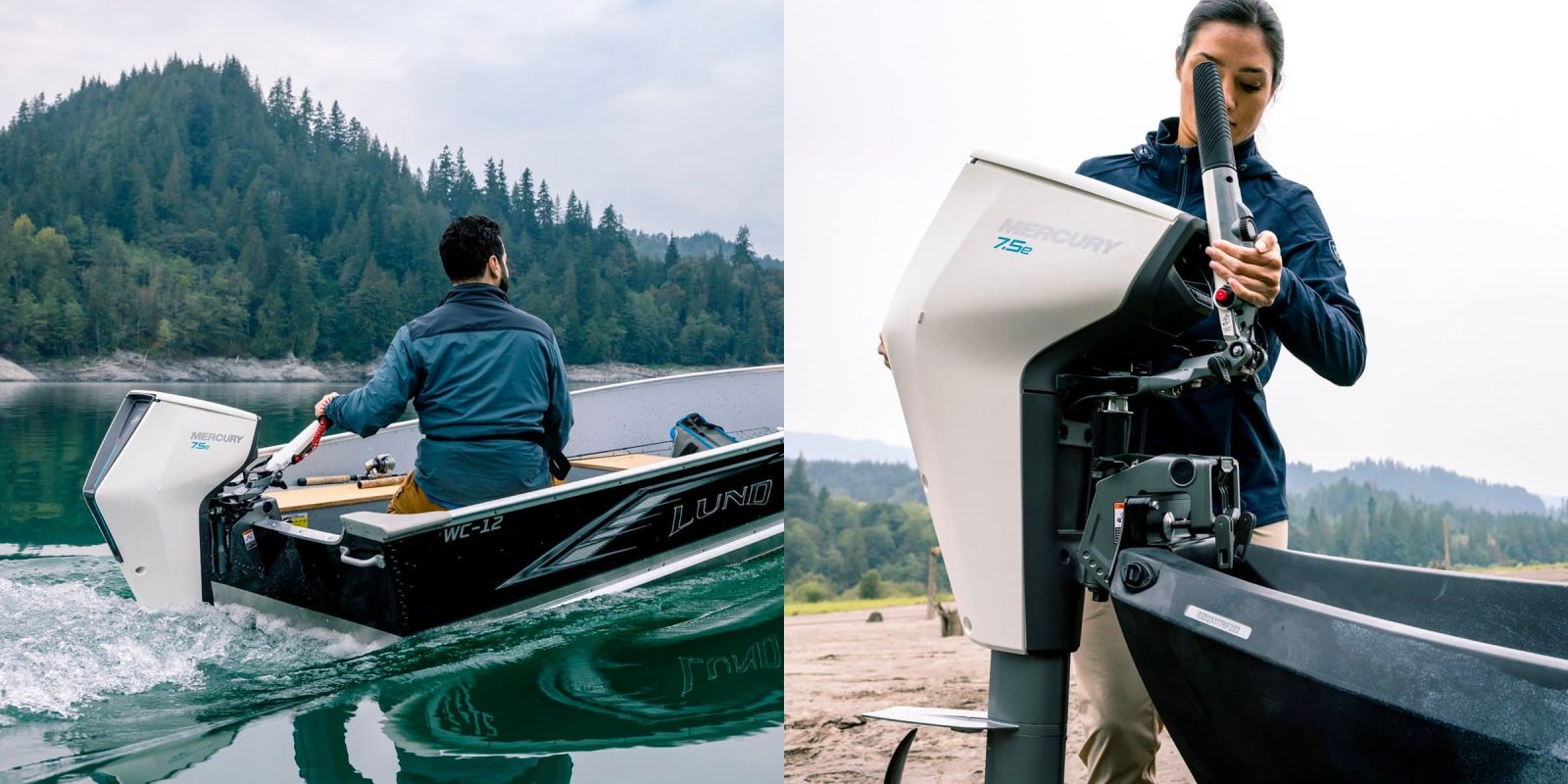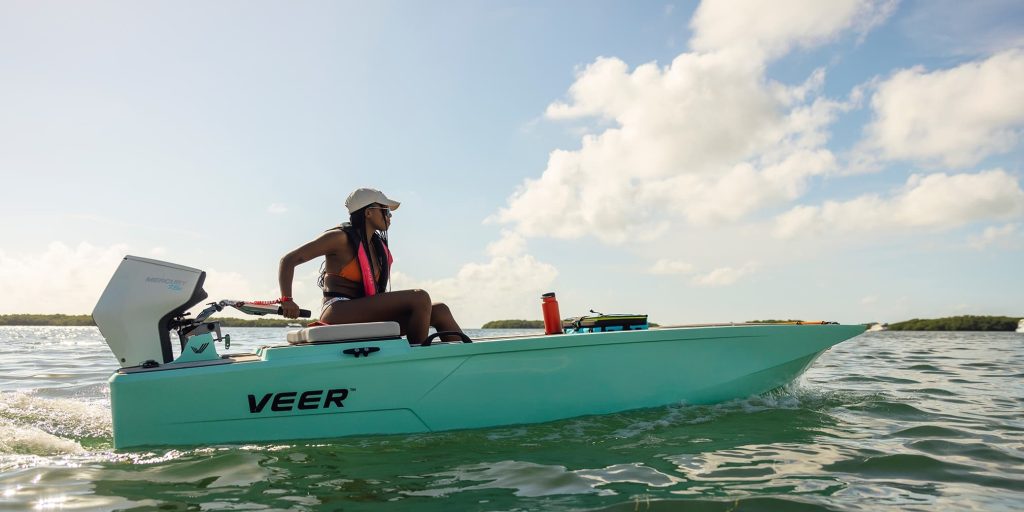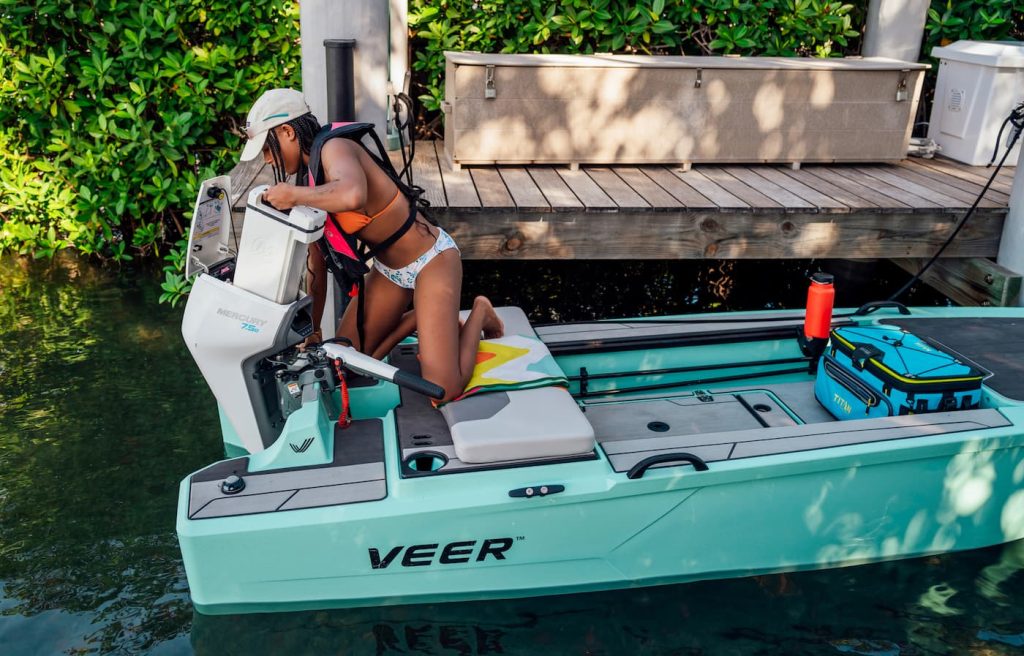
Mercury’s recently unveiled electric outboard motors are now on their way to customers after the company announced the beginning of shipments of the Avator 7.5e. And new performance testing shows just what boaters can expect from the motor.
The compact Avator 7.5e is the first of five upcoming electric outboards from Mercury, with the already-named Avator 20e and 35e to be unveiled later this year as higher-power models.
They’re designed to make it easy to electrify small vessels and provide an effective alternative to combustion-engine outboard motors.

Small electric boats offer numerous benefits, making them an attractive choice for boaters. These vessels produce zero emissions, helping to preserve aquatic ecosystems and improve air quality. They also operate quietly, reducing noise pollution and ensuring a peaceful experience for both passengers and surrounding wildlife.
For anglers, the lack of noise and water pollution is even more important before dropping a line in the water.
Additionally, electric boats have low operating costs and require minimal maintenance compared to their gas-powered counterparts, making them an economical and environmentally friendly option for leisurely outings on the water.
Now with the advent of convenient electric outboard motors, small electric watercraft are becoming increasingly accessible.

The Avator 7.5e electric outboard was unveiled in January of this year alongside a new electric boat model from Mercury’s sister company.
That boat, the Veer X13, was used for initial performance testing of the Avator 7.5e outboard.
The Avator 7.5e is a small-format outboard designed for light watercraft. It is rather low power at just 750 watts, which equates to a single horsepower. But electric outboards are known to provide performance that is in line with combustion engine outboards with several times higher power.
Mercury’s own testing on the Veer X13 showed that the 7.5e was capable of speed and acceleration similar to that of a Mercury 3.5 hp FourStroke outboard.
The upcoming Avator 20e and 35e, if similarly scaled, could thus theoretically match up against combustion engine outboards in the 10 and 15 hp range. But until we see those motors in the water, we’ll have to wait and see.

The Avator line uses 1 kWh swappable batteries that slide into the unit’s case, not unlike a large power drill battery. Run time tests demonstrate the massive difference in efficiency of boats based on speed.
When tested on a Veer X13 boat, a single battery lasted for 60 minutes of operation and a distance of 5 miles (8 km) at 100% throttle. However, when tested at 25% throttle, the battery lasted for 19 hours and covered a distance of 34 miles (55 km), according to PlugBoats.
The swappable battery design means that boaters can bring one or more spare batteries to pop into the unit to expand the electric boat’s range and run time. It’s the same concept as keeping a red gas can on board, just without the mess, expense, fumes, danger, or need to remember to stop at a gas station before heading out.
The transom-mount outboard motor features a standard tiller control but is also set up for digital power & shift remote controls for either center or side console mounting. It also has compatibility with the Mercury Marine smartphone app to offer GPS, a battery charge monitor, and a range estimator.

Electrek’s Take
Top comment by Bill Collins
I bought a 1956 Johnson 5HP outboard for $200. Almost mint condition and has that cool 50's look. I am taking out the engine and putting a 3HP electric motor in it. Then building my own battery packs from surplus cells. On my square back canoe that will be plenty of power. I am expecting to be pulled over more than once by the CA DFW due to it looking like it is too old to comply with emissions standards.
There are several new small electric outboards and kayak e-motors coming out, and the entire area excites me. I’m a big fan of small electric boats for enjoying some relaxing fun on the water or reaching fishing spots that larger vessels couldn’t access.
Self-contained systems like Mercury’s Avator line, which are basically as easy to operate as a power drill, are going to make light electric boats even more enticing.
The biggest issues are still cost and range, but increasing competition is helping with the former while swappable batteries are helping with the latter.
Hopefully I can get on a Veer X13 soon and test out that Avator 7.5e. Or maybe I should just get one for my own little lake cruiser.
FTC: We use income earning auto affiliate links. More.




Comments